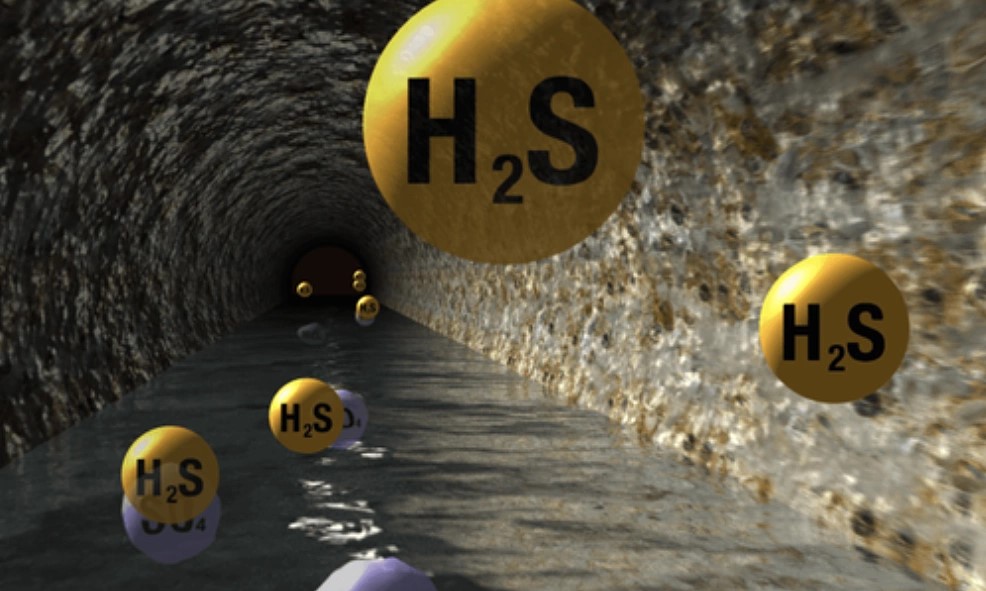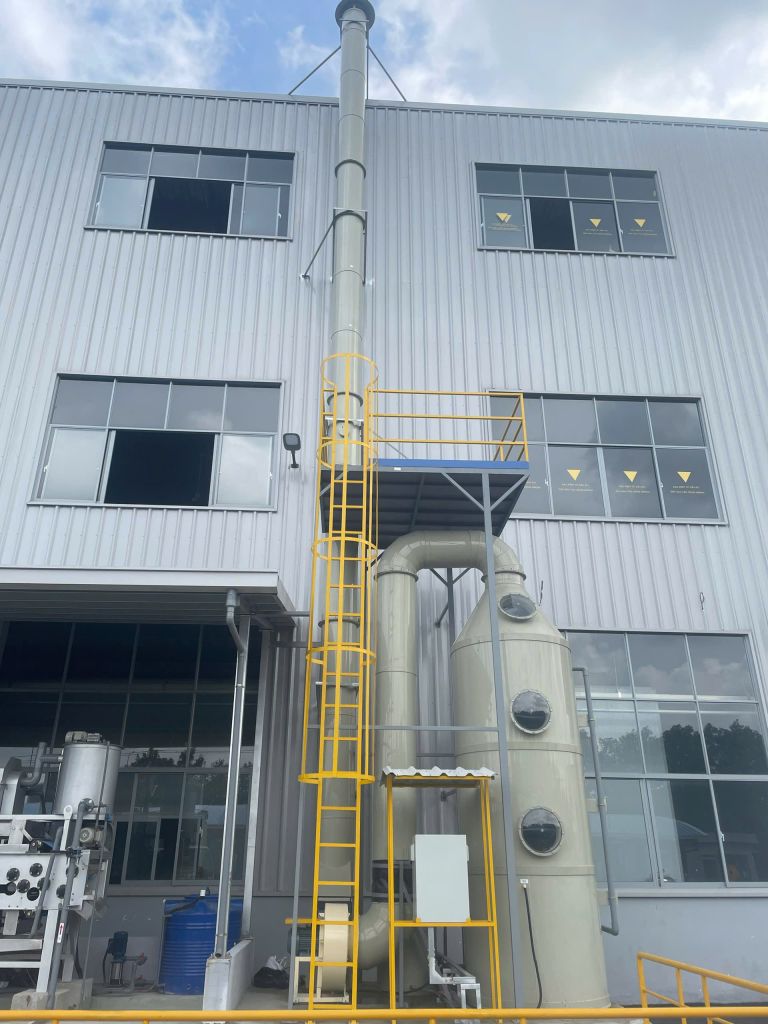In many industrial plants, Hydrogen Sulfide (H₂S) gas appears and becomes one of the serious causes of air pollution. This is a colorless gas with a characteristic rotten egg smell, easily detectable even at very low concentrations. However, H₂S poses many dangers to human health as well as degrades the quality of the living environment. Therefore, studying its sources, physicochemical properties, and solutions for H₂S gas treatment is essential to protect both humans and ecosystems.
Hydrogen Sulfide (H₂S) is a toxic gas commonly found during the decomposition of sulfur-containing organic compounds or in industrial activities. This is a colorless gas with a characteristic rotten egg odor and can be detected even at very low concentrations. H₂S can be formed from two main sources:
Natural sources:
Artificial sources:
In terms of physicochemical properties, H₂S is heavier than air, flammable, and can form explosive mixtures when combined with oxygen. This gas is slightly soluble in water but reacts strongly with alkalis, metals, and oxidizing agents. The harmful effects of H₂S on the environment and human health are very serious: at low concentrations, it can irritate the eyes, nose, and throat; at high concentrations, it can cause dizziness, unconsciousness, and even death. Furthermore, when released into the environment, H₂S contributes to equipment corrosion, air pollution, and acid rain formation, directly impacting ecosystems.

Hydrogen Sulfide (H₂S) is a toxic gas that causes air pollution and directly affects ecosystems.
Using iron oxide (Fe₂O₃)
When the gas stream containing H₂S passes through a layer of iron oxide, it reacts to form iron sulfide (Fe₂S₃). Afterwards, the material can be regenerated with oxygen in the air, allowing multiple reuses and cost savings. This method is suitable for treating low to medium H₂S concentrations, but efficiency decreases with high gas loads or prolonged use.
Using activated carbon
Activated carbon has a large surface area, good H₂S retention capacity, and can be enhanced with chemicals such as KOH, KI, or metal oxides. Its advantage is fast treatment and high efficiency, but regeneration is difficult, and the replacement cost is higher compared to iron oxide.
Using Sodium Carbonate (Na₂CO₃)
H₂S is absorbed and reacts with Na₂CO₃, forming NaHS and NaHCO₃. This method is simple and low-cost but efficiency depends greatly on solution concentration. It is often applied in medium-level gas treatment.
Using Potassium Phosphate (K₃PO₄)
K₃PO₄ solution can effectively neutralize H₂S, suitable for medium and small-scale systems. This method is stable, economical, and easy to operate. However, concentration control is necessary to maintain absorption efficiency.
Using Caustic Soda (NaOH)
NaOH reacts quickly with H₂S to form NaHS and Na₂S, offering high efficiency. This is the most common method due to its thorough treatment capacity. The downside is high chemical consumption and the generation of alkaline wastewater that requires further treatment.
Using Ammonia (NH₃)
NH₃ can absorb H₂S to form ammonium sulfide ((NH₄)₂S). The efficiency is relatively good but requires caution since NH₃ is also toxic and volatile. Poor control can cause secondary pollution.

The methods for treating H₂S emissions must be selected according to specific scales and conditions.
H₂S gas emissions are an environmental issue that must be strictly controlled due to their toxicity and potential for corrosion and air pollution. Treatment methods such as adsorption with iron oxide or activated carbon, and absorption with alkali or salt solutions, each have their own advantages and limitations, making them suitable for different conditions and scales.
Dai Nam is a pioneer in the field of industrial gas treatment, especially H₂S. Our strength lies in combining advanced technologies with tailored solutions for each plant, ensuring high treatment efficiency, optimized costs, and strict compliance with environmental regulations. More than just a technical contractor, Dai Nam is a long-term partner, supporting businesses from consulting and installation to maintenance, helping clients achieve sustainable and greener production.